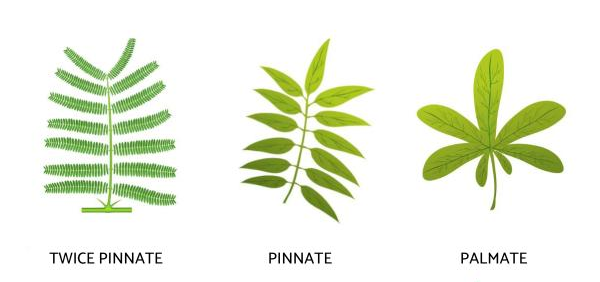Simple vs. Compound Leaves

We are continuing our plant identification series and this week we are talking about the different types of leaves that plants can have. A leaf by definition is any usually flattened green outgrowth from the stem of a vascular plant. Leaves always come off of the stem and should have an auxiliary bud at the base of the leaf. While leaves can come in a variety of shapes, colors and textures there are two main types of leaves you will see, simple leaves or compound leaves. A simple leaf is one that may have lobes or be divided but doesn’t have distinct leaflets. A compound leaf is one that the leaf is separated into distinct leaflets, each with its own small petiole. When in doubt, look for the auxiliary bud at the base of the leaf. The bud will always be at the base of the leaf but not at the base of a leaflet.

There are three different types of compound leaves, pinnately compound (middle leaf ), bi-pinnately compound (left leaf) or palmately compound (right leaf). Of the compound leaf options, pinnately compound is the most common one you will find in the wild. After you have figured out what type of leaf arrangement your plant has, you can then use the type of leaf to help determine what plant you have. (leaflet-leaf like part of a compound leaf, lacks an auxiliary bud at the base)

Have questions? Contact our office where our Horticulture Extension Agent will assist you with questions.
Phone: (316) 321-9660
Email: callae@ksu.edu